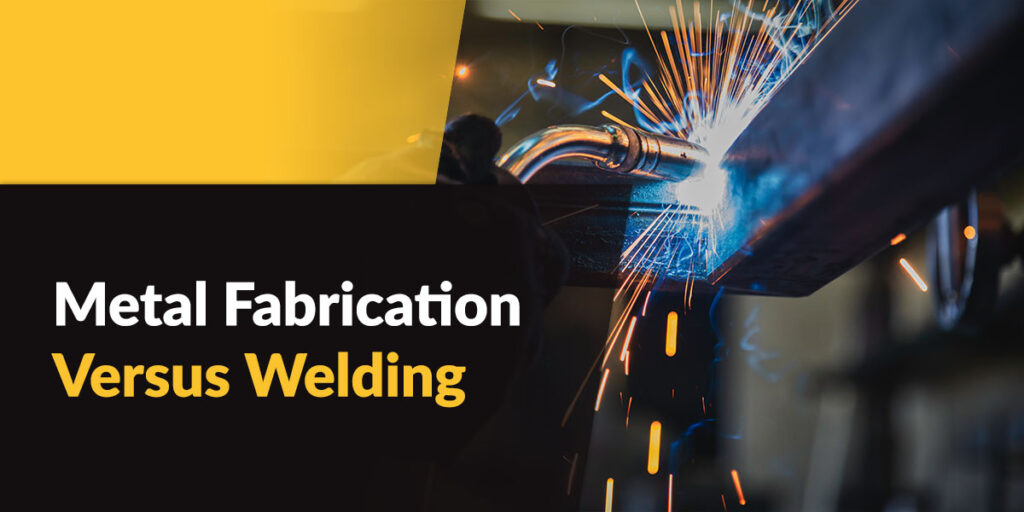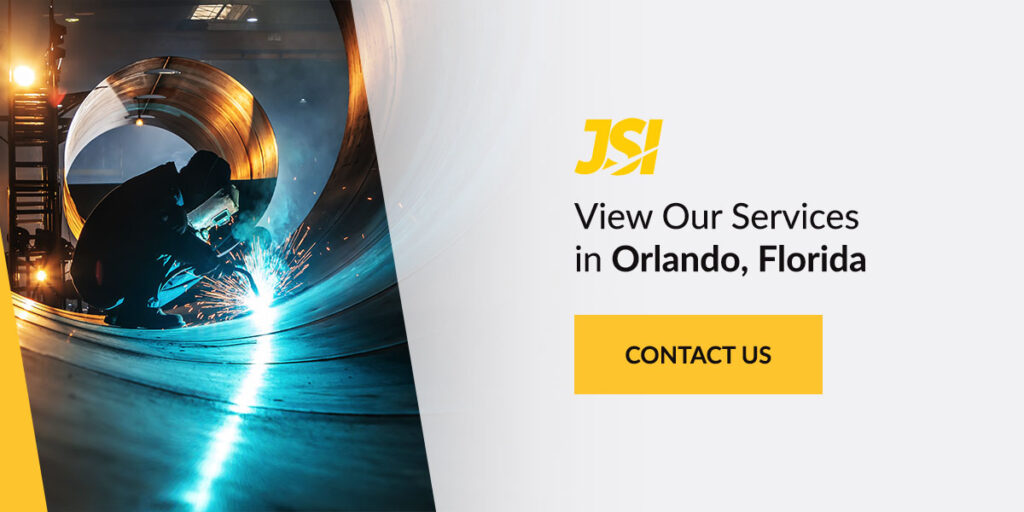
Metalwork is the foundation for modern society, from skylines full of skyscrapers to the cars we drive. Welding and fabrication are two of the most vital processes in the field of metalworking.
The difference between welding and fabrication is that the latter may use many metalworking processes to create a product, while welding is a process in and of itself. Many people conflate the two because welding is one of the most common tasks involved in fabricating a product.
For a better idea of the distinction between metal fabrication versus welding, learn more from the JSI Metal Fabrication team.
Metal Fabrication Process
Metal fabrication is a complex series of interconnected processes that can create virtually anything out of metal. Fabrication generally includes several steps:
- Prototyping: The fabricator produces a 3D or rapid sheet metal prototype so the company can test it for feasibility and the client can approve the design or request changes.
- Programming: With the prototype approved, the fabricator translates the computer-aided design (CAD) drawings into programming for cutting, punching and turning machines.
- Fabrication: The fabrication process now begins, potentially including steps like cutting, folding, welding and more.
- Finishing: The fabricator refines surfaces and edges and adds a coating or other treatment to the product.
- Assembly: The final step is to assemble all of the parts into a single piece for delivery to the client.
Welding Processes
Welding is a metalworking art form that fuses pieces of metal to each other. There are several types of welding processes one may use depending on the job:
- Gas metal arc welding (MIG): This fusion welding process uses an electrical arc to create fusion by feeding a consumable metal wire from a continuous spool. The wire melts into the “puddle” as it’s fed, then hardens to secure pieces together.
- Tungsten inert gas welding (TIG): TIG is a two-handed welding process that uses a tungsten electrode to create a powerful arc. The welder manually feeds filler metal into the puddle.
- Shielded metal arc welding (SMAW): SMAW, or stick welding, uses a flux-coated electrode that melts into filler metal by conducting electricity between the workpiece and the stinger, or electrode holder.
- Oxy-acetylene welding (OA): OA combines oxygen and acetylene through a hand-held torch, using fire rather than electricity to create heat and melt the base and filler metals. Gas welding can sometimes achieve fusion without a filler metal.
Metal Fabrication Tools
Fabricators use a broad array of tools to create parts, largely focusing on cutting and machining. Examples of metal fabrication tools include:
- Laser cutter
- Mechanical saw
- Plasma torch
Welding Tools
In contrast, welders need specialized gear like respirators and helmets with shaded lenses to protect themselves as they shape metal with heat or electricity. Examples of welding instruments include:
- Welding machine or torch
- Filler metals
- Fixtures to hold parts in place
View Our Services in Orlando, Florida
JSI Metal Fabrication is a full-service, certified metal fabrication provider in Orlando, Florida. Our team has a zero-defect policy and provides quick turnaround times and on-time delivery.
Reach out to our team online to speak with a friendly service representative for fabrication projects in the Orlando region. If you can dream it, we can build it.

